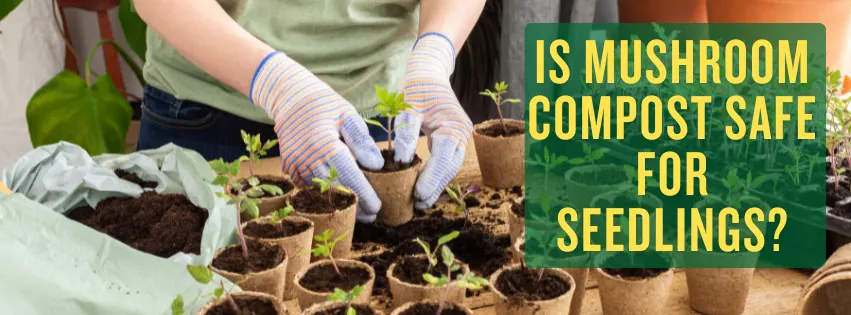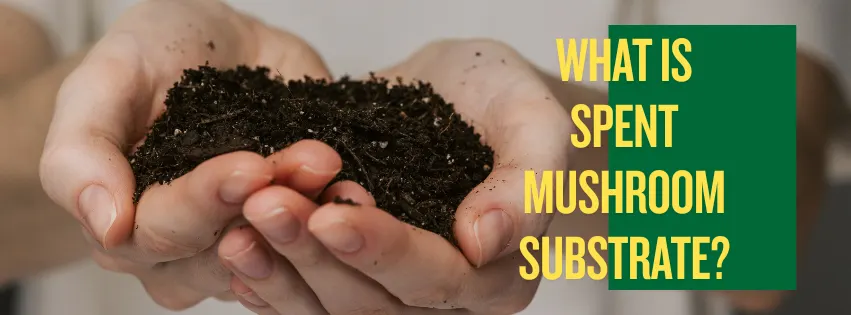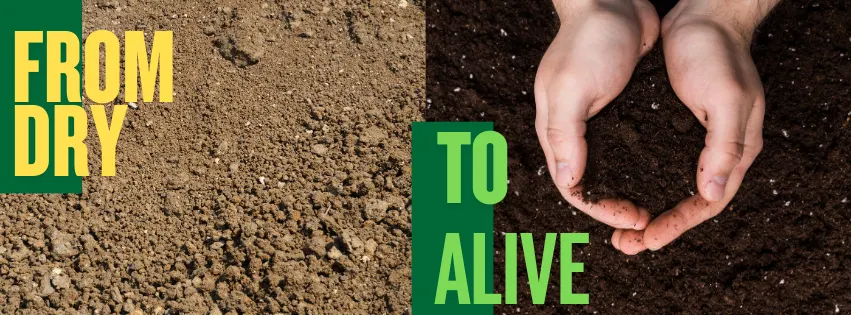
Is Mushroom Compost Safe for Seedlings? Ratios, Rinsing & pH Fixes
Many farmers ask: “Can I use mushroom compost (Spent Mushroom Substrate) for growing seedlings?”
The answer is: Yes, you can, but not directly.
Mushroom compost is rich in organic matter and nutrients. It improves soil, keeps moisture, and supports healthy plant growth. But when used alone for seedlings, it can sometimes cause problems because:
It may have too much salt.
Its pH is a little high (alkaline).
Fresh compost may not be fully decomposed.
Seedlings are like small children. They need gentle food and a soft bed to grow. If the bed is too strong or too salty, they suffer.
In this article, we will explain in simple steps how to make mushroom compost safe for seedlings.
Benefits of Mushroom Compost for Seedlings
Provides slow and steady nutrients.
Improves soil structure and aeration.
Keeps the soil moist for longer.
Encourages beneficial microbes that protect roots.
Cheaper and eco-friendly compared to chemical fertilizers.
Problems if Used Without Care
Salt problem (EC is high): Seedling roots may burn.
Alkaline pH (7.5–8): Seedlings prefer pH around 6–6.8.
Too fresh compost: May take nitrogen from soil instead of giving it to seedlings.
That is why pure mushroom compost should never be used directly for seedling trays or nursery beds. It must always be mixed and treated properly.
Safe Mixing Ratios for Different Crops
| Crop Type | Safe Compost : Soil Ratio | Notes |
|---|---|---|
| Tomato, Chili, Brinjal | 1:3 (25% compost) | Good root establishment, avoids salt stress. |
| Leafy Greens (Spinach, Coriander, Lettuce) | 1:4 (20% compost) | Leafy crops are more sensitive to salts. |
| Cucumber, Pumpkin, Gourds | 1:3 (25% compost) | Vines benefit from slow-release nutrients. |
| Flowers (Marigold, Rose, Ornamental) | 1:2 (33% compost) | Flowers tolerate higher compost levels. |
| Cereals (Maize, Wheat, Paddy seedbeds) | 1:4 (20% compost) | Use lightly in nursery; avoid over-application. |
| Pulses (Moong, Arhar, Gram) | 1:3 (25% compost) | Improves soil microbes for nitrogen fixing crops. |
| Tree Seedlings (Mango, Guava, Forestry) | 1:1 (50% compost) | Woody seedlings handle higher compost safely. |
Rule: Always mix compost with soil, sand, or cocopeat. Never use 100% compost for seedlings.
How to Make Compost Safe: Rinsing & Leaching
Spread the compost in a thin layer.
Lightly water it 2–3 times over a few days. This will wash away excess salts.
Allow the compost to drain in shade for 3–5 days.
Mix it with soil, sand, or cocopeat before using in seed trays.
This simple washing process makes compost gentler for seedlings.
Fixing the pH (Acidity Level)
| Situation (Mix/Compost pH) | What to Add | How Much (per kg of mix) | How to Apply | Notes / Caution |
|---|---|---|---|---|
| Fresh / slightly alkaline (pH ~7.5–8.0) | Cocopeat or coir | 20–30% of total mix | Blend evenly with soil/media | Naturally lowers pH and EC; improves texture. |
| Fresh / slightly alkaline (pH ~7.5–8.0) | Leaf mold / well-matured compost | 15–25% of total mix | Mix thoroughly before filling trays | Buffers pH; adds microbes; avoid immature material. |
| Fresh / slightly alkaline (pH ~7.5–8.0) | Elemental sulfur (farm use) | 1–2 g/kg | Blend into moist mix; allow 1–2 weeks | Slow acidifier; do not over-apply for seedlings. |
| Slightly alkaline mix (pH 7.0–7.5) | Cocopeat + vermicompost | 10–20% cocopeat + 10–15% vermicompost | Blend; moisten evenly | Gently nudges pH toward 6.5; improves biology. |
| Neutral / acceptable (pH 6.2–7.0) | Vermicompost (buffer) | 10–20% of total mix | Mix lightly; avoid heavy salts | Buffers pH and supplies microbes/nutrients. |
| Too acidic (pH < 6.0) | Agricultural lime | 2–5 g/kg | Blend finely; check pH after 3–5 days | Raises pH ~0.5–1.0; don’t overshoot for seedlings. |
| Too acidic (pH < 6.0) + Mg need | Dolomite (Ca-Mg carbonate) | 2–4 g/kg | Blend evenly; re-test pH | Raises pH slowly; adds magnesium. |
| Very acidic (pH < 5.5) | Wood ash (fine, screened) | 1–2 g/kg | Sprinkle and mix; avoid direct root contact | Strongly alkaline & salty—use sparingly only. |
| High salts / EC high (any pH) | Rinsing / leaching with clean water | Thorough flush 2–3 times | Wet, drain, repeat; dry in shade | Best first step for fresh compost to reduce EC. |
| Sodicity / Na issue (any pH) | Gypsum (calcium sulfate) | 3–5 g/kg | Mix in; follow with leaching | Does **not** change pH; helps replace sodium. |
| Structure & buffer (any pH) | Biochar (well-charged) | 5–10% of mix | Pre-soak in compost tea/vermicompost leachate; mix | May raise pH slightly; improves CEC & aeration. |
Farmer FAQs
1. Can I sow seeds directly in mushroom compost?
No. Always mix it with soil or cocopeat.
2. Do I need to sterilize mushroom compost?
If fresh, it may contain weed seeds(rarely, if they are transported by birds/insects). Solarise it (cover with plastic in sun for 2–3 days) before use.
3. Is mushroom compost organic?
It is natural, but organic certification depends on source. Still, safe for sustainable and natural farming.
4. How much compost in a seed tray?
20–25% of the mix. Rest should be soil or cocopeat.
5. Can mushroom compost replace peat moss completely?
Partly yes. Compost gives nutrients, peat/cocopeat improves texture. Use a blend for best results.
Farmer-Friendly Tips
Use mature compost (dark brown, no strong smell).
Always test on a small batch of seedlings first.
Mix with cocopeat, sand, or soil for lightness.
Avoid too much compost for delicate crops like leafy greens.
Keep seed trays in shade net for better survival.
Mushroom compost is safe for seedlings if used correctly. By mixing in the right ratio, rinsing to remove salts, and adjusting pH, farmers can give their seedlings a strong, healthy start.
Remember the saying: “Healthy roots make a healthy harvest.”
Take care of your seedlings with the right compost mix, and they will reward you with strong crops.
Also Read: How to Use Mushroom Compost for Vegetable Gardens


